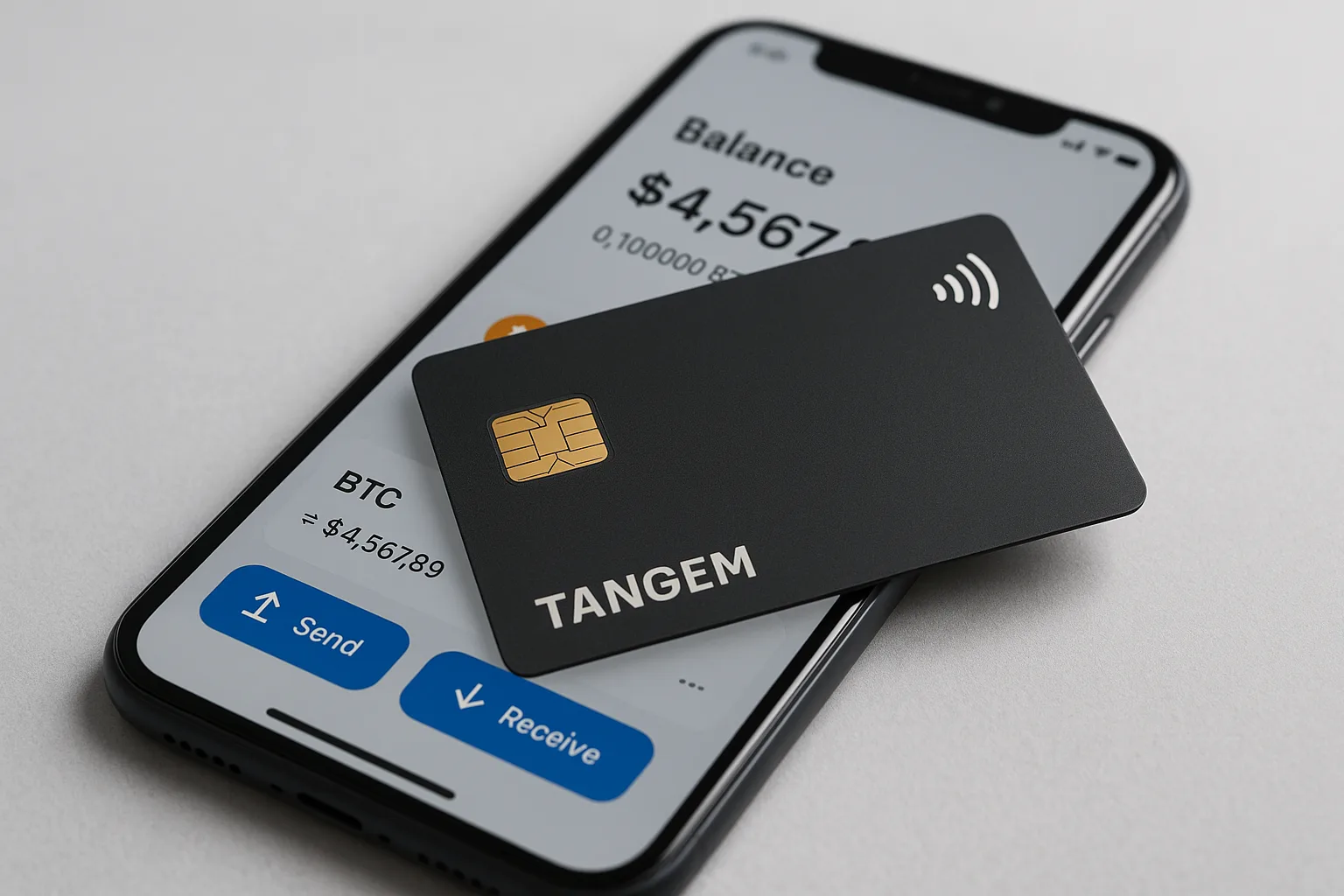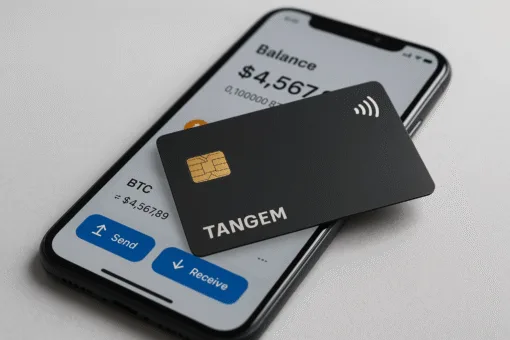In the fast-moving world of cryptocurrency, security remains one of the biggest challenges. From high-profile exchange hacks to phishing scams, the risks are ever present. For investors and everyday users alike, keeping digital assets safe has become just as important as making the right investment decisions. This is where hardware wallets come in, providing offline storage solutions that protect against many of the vulnerabilities of online systems.
Tangem has emerged as one of the more intriguing entrants in the hardware wallet space. Unlike traditional devices that resemble USB sticks, Tangem takes a radically different approach. Its hardware wallet comes in the form of a sleek bank card, using smartcard technology to deliver cold storage security with the convenience of a tap.
In this Tangem review, we explore the company’s background, the technology behind its wallets, user experience, security model, advantages, limitations, and how it compares to rivals.
Tangem at a Glance
Tangem is a Swiss-based company founded in 2017. Its mission is to provide secure, user-friendly solutions for managing digital assets. The firm developed a hardware wallet that looks and feels like a standard payment card but functions as a self-custody solution for cryptocurrencies.
Instead of requiring cables or complex set-ups, the Tangem card communicates with smartphones using near-field communication (NFC). Users simply tap the card to their phone to access, transfer, or sign transactions. This design reduces barriers to entry, especially for people who are new to hardware wallets or uncomfortable with more technical devices.
How Tangem Works
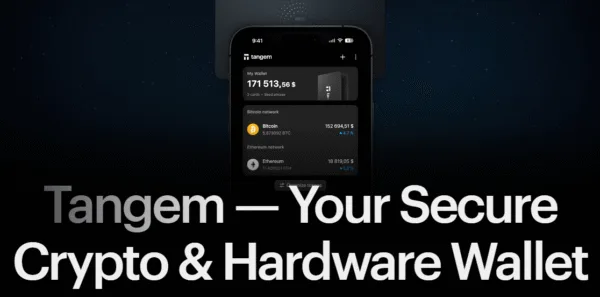
At the core of Tangem’s system is its smartcard wallet. Each card contains a secure chip that generates and stores the private keys used to control cryptocurrencies. Importantly, these keys never leave the card. Transactions are signed within the card itself and then transmitted securely via NFC to the Tangem app, which broadcasts them to the blockchain.
The wallet is initialised at the time of purchase. Users set up a card (or a set of cards) and link it to the Tangem mobile app. The app provides the interface for checking balances, initiating transfers, and managing supported tokens. The cards themselves remain the secure vault where cryptographic operations take place.
One of Tangem’s innovations is the ability to use multiple cards as backups. A wallet can be set up with two or three cards, meaning that if one is lost or damaged, the others can still provide access. This redundancy increases resilience compared to single-device wallets.
Supported Assets
Tangem supports a wide range of cryptocurrencies and tokens. Bitcoin, Ethereum, and popular stablecoins such as USDT and USDC are all included, alongside ERC-20 tokens and other blockchain networks. Support is continually expanding through firmware updates and app integrations.
That said, the breadth of supported assets is somewhat narrower compared to more established hardware wallets like Ledger or Trezor, which have had years to expand compatibility. For mainstream users, however, Tangem covers most of the major digital assets.
Security Model
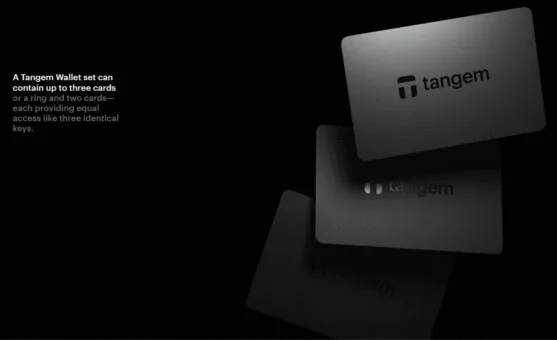
The fundamental purpose of a hardware wallet is to secure private keys, and Tangem’s security model is built around this principle.
Each Tangem card contains an EAL6+ certified secure element chip, one of the highest certification levels for commercial-grade hardware security. This ensures resistance against tampering, side-channel attacks, and other forms of hardware compromise.
The private key is generated on the card and never exposed to the outside world. Even if the mobile app or phone is compromised, the private key remains inaccessible. Transactions require the physical presence of the card, which must be tapped to the phone to sign. This physical requirement prevents remote attackers from initiating unauthorised transactions.
Tangem also employs cryptographic attestation mechanisms. Each card has a unique certificate that allows users to verify authenticity via the Tangem app. This helps prevent supply-chain attacks where counterfeit devices might be introduced.
One trade-off of Tangem’s model is that it does not use traditional recovery seed phrases. Instead, users rely on the multi-card system. If you buy a set of three cards, you can use one as the primary and keep two as backups. This approach simplifies usability but raises questions for users who are accustomed to seed phrase backups.
User Experience
Where Tangem truly stands out is in its user experience. The card form factor is instantly familiar, resembling a credit or debit card. For users intimidated by USB devices, firmware updates, or desktop integrations, Tangem feels approachable.
The setup process is straightforward. After purchasing, users download the Tangem app from the Apple App Store or Google Play, tap the card to their phone, and follow the instructions. Within minutes, the wallet is active. Adding multiple cards for backup is just as simple.
Everyday use is equally intuitive. To send funds, users open the app, enter the transaction details, and then tap the card to their phone to approve. The physical tap acts as a form of two-factor authentication, ensuring that transactions cannot be approved remotely.
The mobile-first approach makes Tangem especially appealing to users who primarily manage crypto through smartphones. However, it does mean that users without NFC-enabled devices may face compatibility issues.
Tangem Compared to Traditional Hardware Wallets
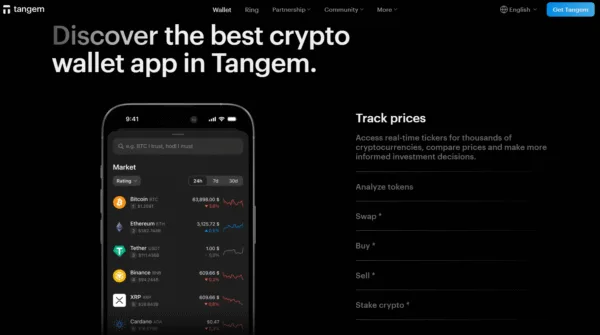
The hardware wallet market is dominated by brands like Ledger and Trezor. These devices typically use USB connections or Bluetooth to interact with computers and phones. They rely on seed phrase backups and often support a wider array of third-party integrations.
Tangem differentiates itself by focusing on simplicity and portability. Its card format makes it more discreet and easier to carry. The NFC tap interaction eliminates the need for cables. For beginners, this can be far less intimidating.
On the other hand, advanced users who want compatibility with DeFi protocols, staking platforms, or complex multi-sig setups may find Tangem more limiting. Ledger and Trezor ecosystems are more mature, with integrations across wallets and dApps. Tangem is catching up but remains primarily focused on core storage and transfers.
Pricing and Value
Tangem wallets are sold in sets rather than individually. A common bundle includes two or three cards, priced competitively compared to single-unit wallets from competitors. The multi-card model ensures that users have redundancy without needing to buy separate devices.
In terms of value, Tangem offers a compelling proposition. The cards are durable, tamper-resistant, and affordable. For everyday investors who want a balance of security and convenience, the pricing is attractive.
Advantages of Tangem
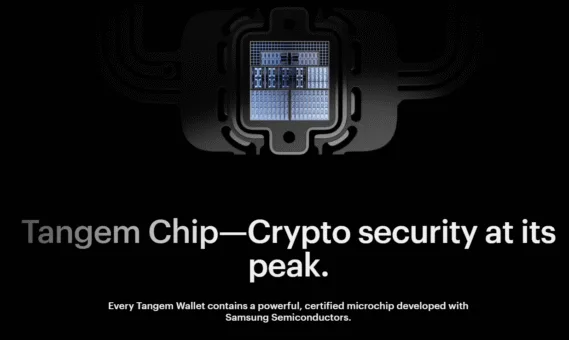
Several features make Tangem stand out in the crowded hardware wallet space.
Simplicity: The card format and tap-to-use interaction remove many of the barriers associated with traditional wallets.
Portability: A Tangem card fits easily in a wallet or pocket, making it convenient to carry.
Redundancy: Multi-card sets provide built-in backup solutions, reducing the risk of losing access due to device failure.
Security Certification: The EAL6+ secure element is a high industry standard, providing assurance of robust protection.
No Seed Phrase Management:
Users do not have to deal with writing down or hiding a recovery phrase, a common point of confusion.
Limitations and Criticisms
Tangem also has some limitations worth noting.
Limited Integrations: Compared to Ledger and Trezor, Tangem has fewer integrations with third-party wallets, exchanges, and DeFi platforms.
No Seed Phrase Option: While some users appreciate the simplicity, others see the lack of a recovery phrase as a drawback. Losing all cards without backups would mean losing access permanently.
Reliance on NFC and Mobile App: Users without NFC-enabled smartphones are excluded, and reliance on a single app may raise concerns about centralisation.
Narrower Asset Support: Although the list is growing, Tangem does not yet support as many niche tokens or blockchains as competitors.
Use Cases
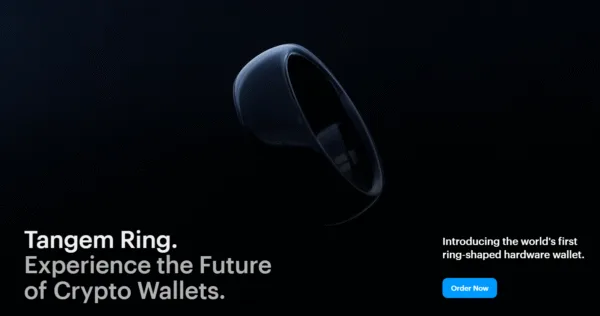
Tangem is particularly well suited for:
- New investors who want a simple, approachable introduction to hardware wallets.
- Everyday users managing mainstream assets such as Bitcoin, Ethereum, and stablecoins.
- Travellers or mobile-first users who want a wallet that is discreet, portable, and easy to carry.
- Long-term holders seeking cold storage without the complexity of seed phrases.
It may be less ideal for advanced DeFi participants who need integrations with staking platforms, decentralised exchanges, or complex wallets.
Tangem and Regulation
As with all hardware wallets, Tangem sits at the intersection of technology and financial regulation. While wallets themselves are not regulated financial services, the broader context of crypto regulation influences adoption.
Tangem positions itself as a Swiss company, leveraging Switzerland’s reputation for financial stability and neutrality. This enhances credibility with global users. The focus on self-custody also aligns with the industry trend towards giving users direct control of their assets, especially in the wake of exchange collapses such as FTX.
Market Position
Tangem has carved a niche in the market by focusing on simplicity and accessibility. While Ledger and Trezor dominate among tech-savvy users, Tangem appeals to those who value convenience and familiarity. Its marketing often highlights the ease of use compared to more technical solutions, positioning the product as the “hardware wallet for everyone.”
This strategy has allowed Tangem to build recognition, though scaling further will depend on expanding integrations and continuing to build trust.
Tangem vs Ledger vs Trezor
How the leading hardware wallets compare
| Category | Tangem | Ledger | Trezor |
|---|---|---|---|
| Form factor | Smartcard, tap-to-use via NFC | USB stick-style, some models with Bluetooth | Small handheld device with screen & buttons |
| Setup & ease of use | Very simple No seed phrase, just tap card | Moderate Requires seed phrase and firmware updates | Moderate Requires seed phrase, desktop or mobile integration |
| Backup & recovery | Multi-card redundancy (2 or 3 cards). No seed phrase. | Seed phrase backup, compatible with other wallets | Seed phrase backup, widely standardised |
| Supported assets | Major coins & tokens (BTC, ETH, stablecoins) | Wide, including altcoins, NFTs, staking | Wide, strong for altcoins & integrations |
| Integrations | Limited, mostly app-based | Strong dApp, DeFi & exchange integrations | Good support via third-party wallets |
| Security | EAL6+ certified secure element chip | Secure element (EAL5+) + custom OS | Open-source firmware, no secure element |
| Connectivity | NFC with smartphone app only | USB / Bluetooth depending on model | USB |
| Pricing | Sold in 2–3 card bundles at competitive price | Single devices, priced mid to premium range | Single devices, priced mid range |
| Best for | Beginners Mobile-first users | Advanced users DeFi | Security-conscious Open-source fans |
The Future of Tangem
The future for Tangem looks promising but competitive. As crypto adoption grows, demand for hardware wallets will rise. Tangem’s approach of blending security with simplicity has strong appeal, particularly among mainstream users entering the crypto space.
To expand, Tangem will likely need to increase asset support, integrate with more decentralised finance applications, and address concerns about recovery mechanisms. Innovations such as biometric authentication or cross-platform integrations could strengthen its position.
Case Study: A Beginner User
Consider Emma, a newcomer to crypto. She buys Bitcoin and Ethereum on an exchange but worries about leaving her assets there. A traditional USB-style hardware wallet feels intimidating, with seed phrases and firmware updates.
Emma chooses Tangem instead. She sets up a three-card wallet, keeps one in her purse, one at home, and one in a safe. She manages everything through her phone with simple taps. For her, Tangem balances security and ease, removing the complexity that might otherwise discourage her from taking control of her assets.
Case Study: An Experienced DeFi User

Now consider Daniel, an experienced DeFi participant who uses staking platforms, decentralised exchanges, and governance tokens. He wants hardware-level security but also compatibility with a range of dApps.
When he tries Tangem, he appreciates the convenience but finds the lack of integrations limiting. Ledger’s ability to connect with MetaMask and DeFi protocols is more aligned with his needs. For Daniel, Tangem works as a backup wallet or for long-term storage of major assets, but not as his primary tool.
Conclusion
Tangem offers a refreshing take on crypto security. By transforming the hardware wallet into a smartcard, it lowers barriers to entry and makes self-custody accessible to a broader audience. Its strengths lie in simplicity, portability, redundancy, and robust security standards.
At the same time, Tangem is not without trade-offs. Limited integrations, reliance on NFC, and the absence of traditional seed phrase recovery mean it may not suit all users. For those who need deep ecosystem compatibility, traditional wallets like Ledger or Trezor remain more versatile.
Nevertheless, Tangem has carved a unique space in the market. For beginners, everyday users, and those who prioritise ease of use, it is one of the most approachable hardware wallets available. As the crypto world continues to evolve, Tangem represents an important step toward making secure self-custody as simple as tapping a card.

